You know you want that once-in-a-lifetime experience of hiking to Machu Picchu. You started research and you’ve read there are a few options, so which one is best?
Maybe you thought the Inca Trail was not to be missed. But then someone told you it’s too crowded and you’d be dumb not to do the Salkantay Trek instead.
The thing is, that most people giving advice have only done one of these treks. Or they are agencies trying to get you to buy any trip with them. So how do you choose?
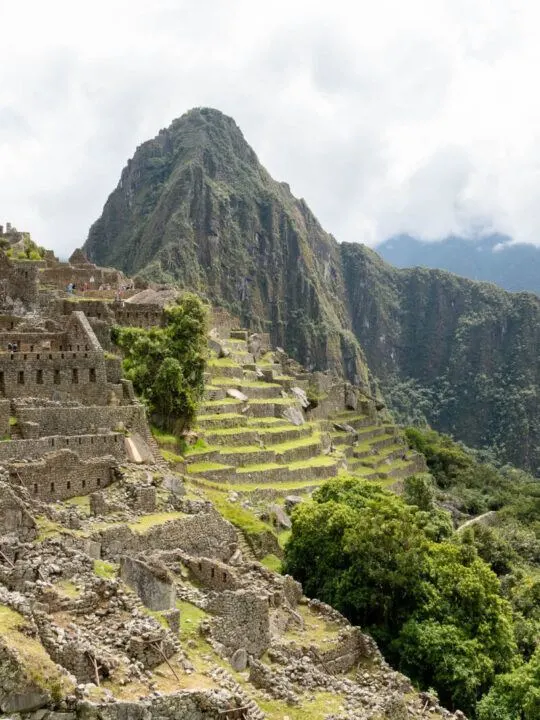
I’ve done both, so let’s delve into the details, to help you pick the best fit for you.
What is the Inca Trail?
The Classic Inca Trail has long been the preferred way for adventurous travelers to get to Machu Picchu, “as the Inca did”. (Although I imagine the chaskis did it in one day instead of four!)
From km82, you’ll follow the Urubamba River for a short time, before heading up into the mountains. You’ll climb up to three high passes, including “Dead Woman’s Pass” at 13,780 feet (4,200 meters).
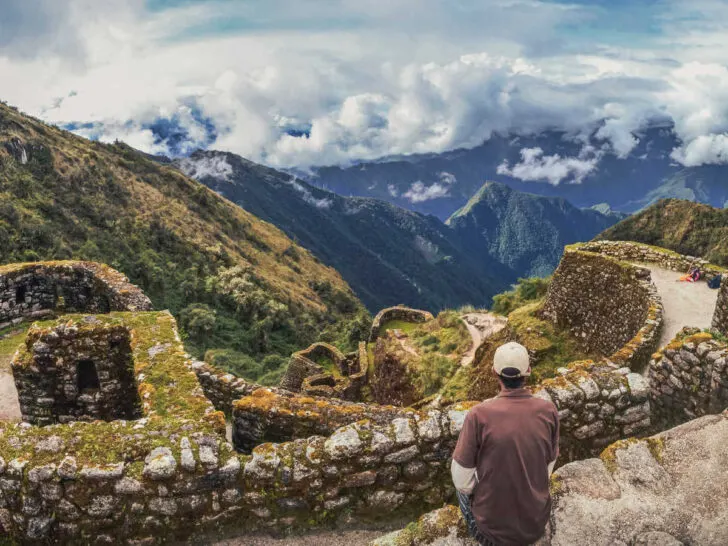
The well-preserved Inca Trail guides you through the cloud forest to drop you directly into Machu Picchu.
Here are the details:
- Inca Trail Distance: 28.6 miles (46 km)
- Inca Trail Pass Altitude: 13,780 feet (4,200 meters)
- Duration: Three and a half to four days hiking, plus the Machu Picchu tour.
- Difficulty: Moderate to hard
- Start and end point: km 82 (Ollantaytambo) to Machu Picchu site, through the Sun Gate.
- Cost: From $780 USD for a four-day, group tour (we recommend indigenous-run Alpaca Expeditions; mention Worldly Adventurer for a 5% discount)
- Permit and guide requirements: Permits must be purchased in advance and sell out several months before for peak season dates. You must contract a licensed operator for this trek.
- When to hike: The Inca Trail is open most of the year, except during February. Rain is much less likely from May through September (dry season) and is most likely from January through March.
- Fitness level required: This is a moderately difficult hike. Stay at least three days in the area to acclimatize before trekking. There are 3 high passes and some people struggle with all the downhill on stone stairs. Condition your knees, quads, and glutes before you go.
- Further information: Read this extensive guide to the Inca Trail.
What is the Salkantay Trek?
The Salkantay Trek has exploded in popularity recently, as there is no permit system and there are different accommodation options. For that reason, I’d say it’s no longer “off the beaten track”.
That said, the massive snow-capped peaks and varied scenery make it a spectacular hike.
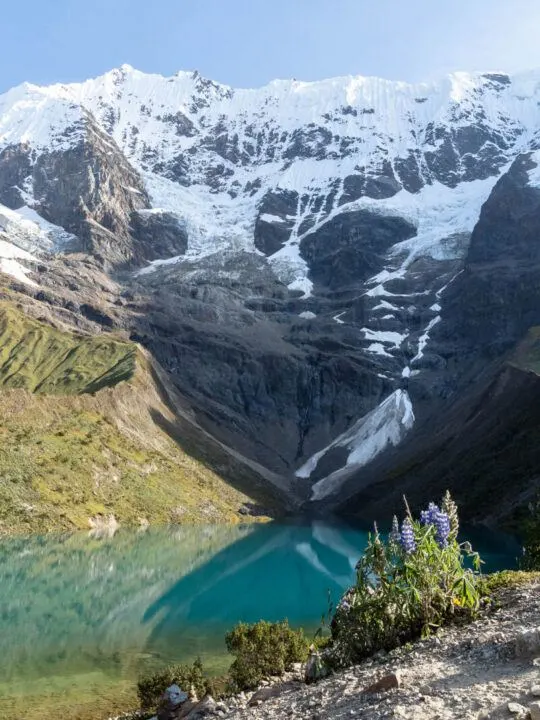
This trek starts high and ends low, so takes in a wide variety of ecosystems. Many itineraries include a side trip to Laguna Humantay, a glacial lake, and you’ll have a sneak preview of Machu Picchu before you even get there!
Here’s a breakdown:
- Salkantay Trek Distance: 43.5 miles (70 km) if you include Humantay Lake and hike all the way to Aguas Calientes.
- Salkantay Pass Altitude: 15,090 feet (4,600 meters)
- Duration: Four days hiking, plus Machu Picchu on day five.
- Difficulty: Moderate to hard
- Start and end point: Soraypampa to Aguas Calientes (or Hidroeléctrica).
- Cost: From $500 USD for a group tour (we recommend indigenous-run Alpaca Expeditions; mention Worldly Adventurer for a 5% discount)
- Permit and guide requirements: There is an entrance fee for this hike, paid in Mollepata. A guide is not required and it’s pretty easy to do independently.
- When to hike: The trail is open year-round, although dry season is the most popular time to hike. The trail can get very muddy during rainy season, when clouds can also obscure the views of the snow peaks.
- Fitness level required: Since the Salkantay elevation is higher and the overall distance longer, this trek is considered a little harder than the Inca Trail. Give yourself at least three days in the area before starting. The relentless downhill requires good knees, strong legs, and maybe hiking poles.
- Further information: Read this comprehensive guide to the Salkantay Trek.
Five reasons why you should hike the Inca Trail
1. It’s the Inca Trail!
This hike is a classic for a reason: the beautifully designed stone path. Following this engineered roadway is a truly unique experience. There are even some tunnels through the rock!
2. You arrive at Machu Picchu through the Sun Gate
This is particularly special now, as you can no longer visit this area from the main site.
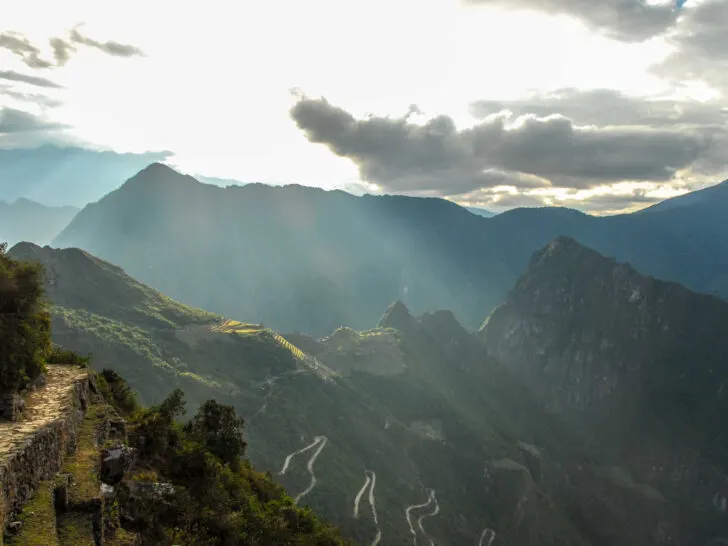
3. You get access to archeological sites that can’t be visited otherwise
There are six archaeological sites that you can only see as part of this trek. The most impressive is Wiñay Wayna, with terraces built into an impossibly steep hillside with a waterfall backdrop.
4. This trail is well-protected, making it much more sustainable than other options
The strict rules and government oversight mean there are many actions taken to conserve the trail and the surrounding wilderness.
The ban on pack animals and limited permits help keep erosion in check. Agencies are obligated to ensure trash is packed out and that clients and porters adhere to the rules.
5. Porters working on the Inca trail now have far better working conditions
As of 2023, new rules around pay and conditions for porters have reduced the potential for abusive work environments. Decent wages are guaranteed, alongside pension schemes and healthcare.
What’s not so good about the Inca Trail
- There are so many stairs! Many people find it harder to find a rhythm on stairs, especially because these are uneven.
- At the time of writing, there is some doubt about whether all agencies are complying with the new porter employment rules. If you find a notably cheap option, it’s possible they are cutting corners.
- The new rules dictate the maximum number of trips porters can work per month. Like many seasonal workers, porters rely on peak season to save up money, so not being able to load up on work can be a disadvantage.
- The costs are prohibitively expensive for many travelers, as hiking independently is not allowed.
- Campsites are designated by the government and most groups spend each night at the same campgrounds. This means groups tend to hike close together, making it feel quite crowded at time.
- Swarms of porters rush pass you to get to the lunch spots and campsites before their groups, throwing you off your stride.
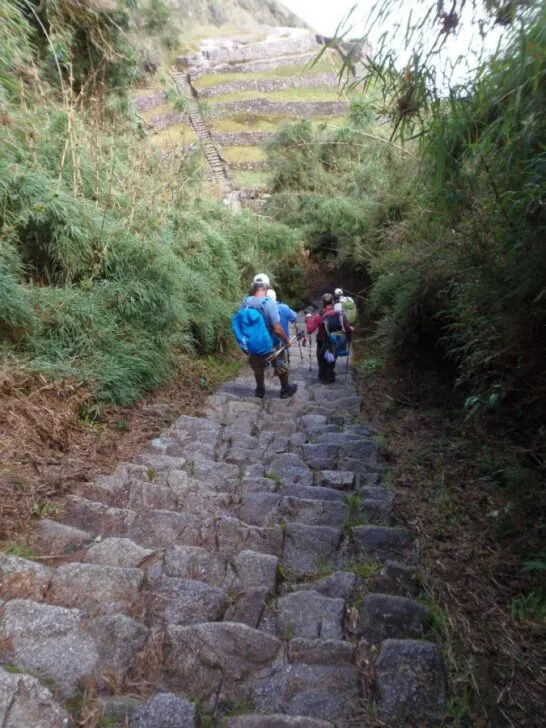
Five reasons you should choose the Salkantay Trek instead
1. This is potentially the region’s most varied hike
You’ll be flanked by two massive mountains, pass close to the Salkantay glacier, and drop deep into the cloud forest. Many itineraries include a side trip to the emerald waters of the Humantay glacial lake.
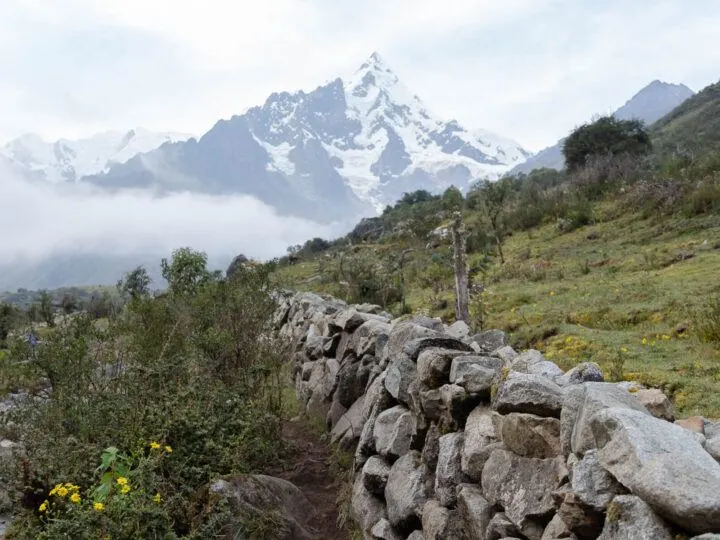
2. You can see Machu Picchu on this hike from the beautiful final campground
The Llactapata site is well worth the extra climb on the last day. You can see Machu Picchu from here!
3. You don’t have to carry your things
Pack animals are allowed on this trail, so you don’t have to rely on porters to carry your gear.
4. And you don’t have to camp, either
You don’t have to camp if you don’t want to! There are basic refuges, fixed glamping options, and even luxury lodges on this trail. You might have the option to take a warm shower at some campsites!
5. It’s a much cheaper option – and one you can organise last-minute
It’s far cheaper, and even if you’re not a planner, you won’t miss out because of the lack of permits required for the trail. Added bonus, you can do it without a guide if you want to!
What’s not so good about the Salkantay Trek
- Pack animals really churn up the trail, creating erosion issues. This also means it gets very muddy in the rainy season.
- You may find yourself regularly jumping out of the way of groups of horses charging up the hill.
- There are no conservation efforts to protect the wilderness. The lack of permit system means over-tourism is a real risk. Additionally, many agencies have rigged up permanent campsites in tiny mountain communities.
- While still marketed as an “off-the-beaten-track” trek, in my opinion, it really isn’t anymore. Hundreds of people hike this trail daily during peak season and parts will feel congested.
- Since this trek only gets you as far as Aguas Calientes, you will have to get up to Machu Picchu like everyone else: by bus. Unless you want to do some extra hiking of course!
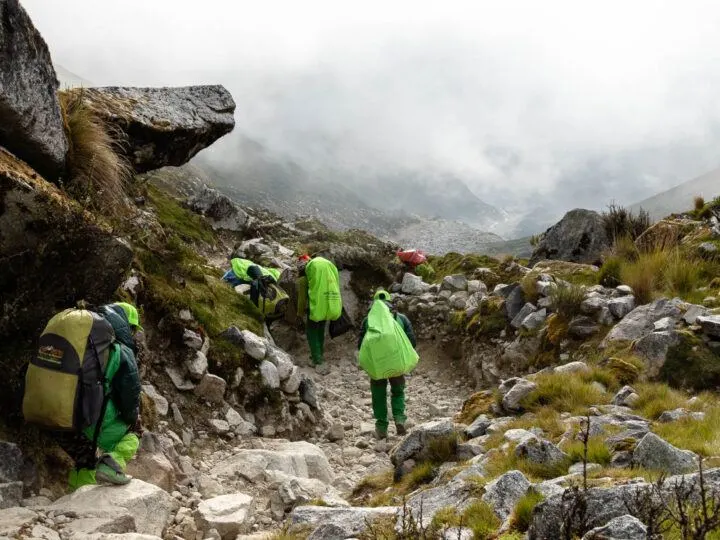
My Pick?
I have to say that the Classic Inca Trail has a soft spot in my heart. I find it so magical to walk through the mist on a 500-year-old road, that baffles modern engineering.
And that first glimpse of Machu Picchu as you pop up through the Sun Gate is breathtaking.
Honestly, though, I might never have done the Inca Trail if work hadn’t sent me to test out services. The costs are too high. If you are in the same boat, the Salkantay Trek is a stunning, challenging trek. Plus, it’s extra special being so close to the glaciers.
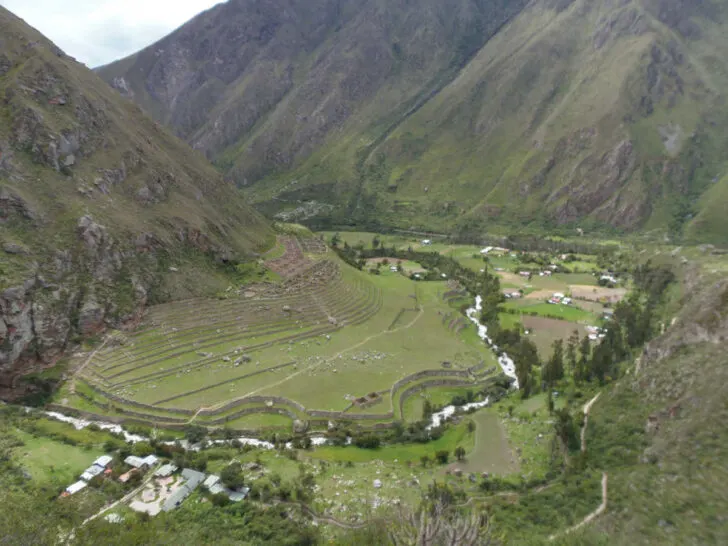
That said, if you have the budget and can plan far enough in advance, why not do the six-day combined Salkantay and Inca Trail Trek? You’ll get the best of both worlds and even a day to yourself as you hike along the south side of the mountain.
Want a cheeky 5% discount on the Inca trail?
Alpaca Expeditions are not only one of the most sustainable companies offering Inca trail treks to Machu Picchu, but their guides, porters and chefs are the ultimate hosts.
They’re now offering Worldly Adventurer readers a 5% discount on all of their hikes – just mention Worldly Adventurer when you enquire!
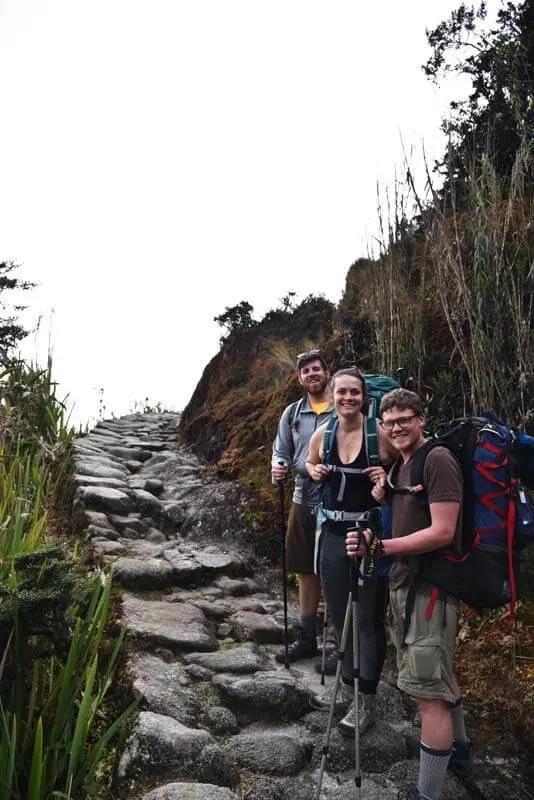
Alternative treks to Machu Picchu that you should consider
The Salkantay Trek has long been a favorite alternative to the Inca Trail, but there are other options.
The Short Inca Trail
If you want to hike into Machu Picchu but don’t want to camp, this is the perfect choice. Often sold as the “Two Day Inca Trail”, it involves one day of hiking, and you sleep in a comfortable hotel before touring Machu Picchu.
The trek starts just before you reach Aguas Calientes by rail and takes you up to the ruins of Wiñay Wayna. From here, you join the main trail and walk into Machu Picchu via the Sun Gate.
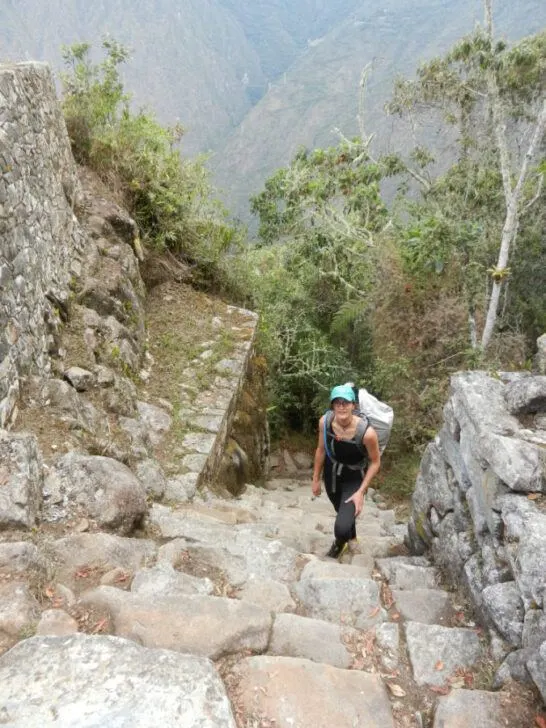
Just like the Classic Inca Trail, you’ll need to contract a licensed agency to do this hike.
The Lares Trek
The “Lares Trek” refers to several different trails that connect the town of Lares to the Sacred Valley. Agencies offer all the routes as three-day treks, although independent hikers often do them in two days.
Bear in mind that this option doesn’t take you into Machu Picchu or Aguas Calientes on foot. It is sold as an alternative trek to Machu Picchu, but you still catch the train.
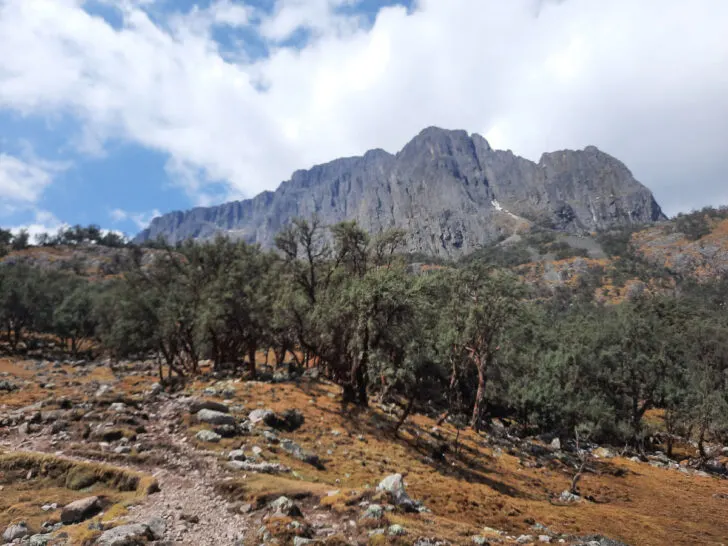
Since there is more than one route, the Lares Trek doesn’t feel as busy as the Inca Trail or the Salkantay Trek.
All routes pass through high-Andean communities, making this the most cultural of all the options. You’ll soak in thermal springs and see mountain lakes, native forests, waterfalls, and snow-capped mountains.
Most groups head to Aguas Calientes by train on day three. Alternatively, you could spend a night in the valley and do the Short Inca Trail to Machu Picchu the next day.
You can do the Lares Treks without a guide, but good route-finding skills are essential, as the trails are not always clear.
The Inca Quarry Trek
With alternative treks becoming more popular, agencies have started getting creative with their offerings. The Inca Quarry Trek takes in a waterfall, some lesser-known archaeological sites, and a quarry with huge carved stones that got left behind.
The highlight of this trek is the Inti Punku (or sun gate), perched on the valley edge. Its view out to Veronica Mountain is truly spectacular.
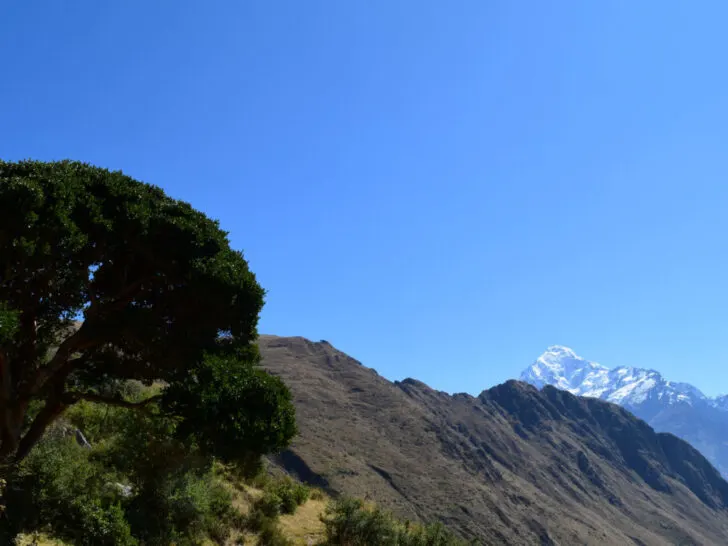
This is offered as a three-day trek (plus Machu Picchu), but many independent hikers do it in two days. You don’t need a guide and the trail is quite easy to follow.
Planning the rest of your trip to Peru? Read our complete guides to the Inca Trail and the Salkantay Trek, discover when’s the best season to visit Machu Picchu and plan your pre-Machu Picchu time in Cusco with these itineraries.
